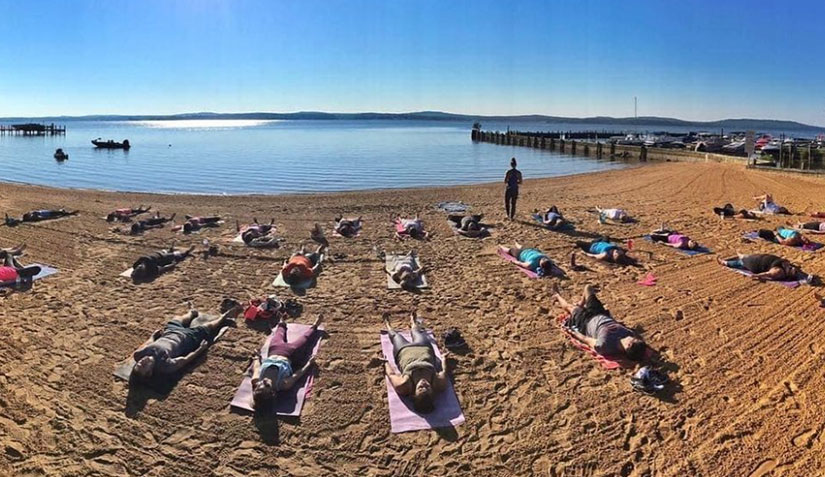By: Rebecca Rondone
Owner of Pura Vida Yoga & Physical Training
Most often revealing pieces of ourselves we want to run away from. It hurts and we push away. Resistance is habitual. How can new pathways to find freedom be created in your life? The confusion, pain, and or discomfort is showing us something. Lean in. It is often a sign that something is ready to be released so that you can begin.
Savasana (shah-VAH-sah-nah or shih-VAH-snah) is the final resting pose at the end of almost every yoga practice. Savasana, quite literally, means “Corpse Pose” – which to some does not exactly bring such peaceful images to mind, does it?
The reason is that the art of relaxation is harder than it looks. The essence of Savasana is to relax with attention, that is, to remain conscious and alert while still being at ease. Remaining aware while relaxing can help you begin to notice and release long-held tensions in your body and mind.
Cultivating the art of Savasana is more valuable than ever. Our society tends to place greater value on speed and productivity; learning how to do nothing is a skill that can help you become more productive when you need to be.
Savasana helps us learn how to completely surrender, stop fighting the clock, and make space for peace and harmony to fill the soul. Savasana is refreshing Gods Creation and returning with heightened functionality.
There are actually three stages of Savasana:
Stage 1 is allowing the body to find relaxation.
Stage 2 is when Savasana actually begins.
Stage 3, the final state of Savasana, occurs when the ego and mind let go.
How to Meditate on Scripture:
- Start with prayer and focus your mind upon God.
- Next, choose a passage of scripture.
- Read the passage numerous times.
- Re-read parts that may be confusing or that specifically speak to you at the moment.
- Consider, ponder, and seek to understand the scripture.
It is a practice in which distracting thoughts and feelings are not ignored but are rather acknowledged and observed without judgment as they arise to create a detachment from them and gain insight and awareness.
When the mind becomes free from agitation, is calm, and at peace the benefits are manifold. It is an essential practice for mental hygiene. A clarity of perception, improvement in communication, blossoming of skills and talents, an unshakable inner strength, healing, the ability to connect to an inner source, relaxation, and rejuvenation, are all a natural results of meditating regularly. In today’s world where stress catches on faster than the eye can see or the mind can perceive, meditation is no more a luxury. It is a necessity.
Contraindications. People who are not advised to lie on back should avoid this pose. An alternative would be to sit up supported against the wall or a chair. One who is suffering with severe acidity may hurt himself/herself to lying on the back because food pipe may displease your body system.
For a mindful few minutes on the mat, floor, or chair, try these techniques.
- Practice progressive relaxation.
- Do some breath counting (Sama Vritti).
- Grab a block.
- Get comfy.
- Practice “witnessing.”
- Let your body feel heavy.
- Breathe out for longer than you breathe in.
To exit the pose, first begin to deepen your breath. Bringing gentle movement and awareness back to your body, wiggling your fingers and toes.
What does the Bible say about Meditation? Scripture frequently mentions meditation and meditating on the teachings and laws of God. It is important that we think deeply and reflect on what we believe and our actions. Without this introspection, we can forget the importance of living righteously and following the lessons of the Bible.
Philippians 4:8
Finally, brothers and sisters, whatever is true, whatever is noble, whatever is right, whatever is pure, whatever is lovely, whatever is admirable — if anything is excellent or praiseworthy — think about such things.
Explore more articles from VOM Magazine here: https://www.veteransoutreachministries.org/vom-magazine/




